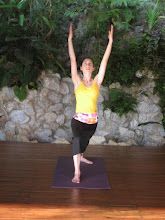
I recently completed an Ayurvedic seasonal cleanse. The beauty of the Ayurvedic approach to detox and rejuvenation lies in its simplicity (simple, yes; easy, not necessarily). The basic idea is that oleation (the Sanskrit term is snehana), of the body, both inside and out, loosens toxins (Ama) lodged in the tissues so they may be moved into the GI tract for removal. The unctuous quality of the applied fatty substances also help to nourish and pacify Vata dosha, which is disturbed in most people who live in our modern Vata-aggravating society. A purgative is taken on the last day to eliminate the accumulated Ama.
The 8 day cleanse protocol may not be entirely pleasant (especially the last day), but it is accessible to the average American as all of the fatty substances needed can be found in most grocery and drug stores (always look for the highest quality, hexane-free vegetable oils and organic dairy products). The catch is that it takes discipline to stick to a pure & fresh diet, perform a few unfamiliar hygiene practices, and get adequate rest.
The three key ingredients needed for cleansing are:
1. Ghee
Ghee, as I have described before, is
clarified butter or the pure fat which remains when butter is cooked and strained to remove the milk solids and water. The first four days of the cleanse entail taking ghee first thing in the morning (on an empty stomach). No food should be taken for at least 1 hour or until one feels hungry. The amount of ghee administered is gradually increased each day and will vary from person to person.
Dr. John Douillard explains that ingesting ghee on an empty stomach causes the body to go into "fat metabolism mode." Fat burning encourages calmness (ie. the opposite of a stressed out state which leads to the production of cortisol and many health problems) and aids in the removal of negative emotions and fat-soluble toxins (aka. chemicals) that are stored in our fat cells. During these first four days, a light diet containing no oil should be observed.
2. Sesame Oil
Sesame oil is the oil of choice for external oleation. It is warming and heavy so reduces excess Vata without aggravating Kapha. Sesame oil is also fine for Pitta-dominant individuals who do not have an extreme doshic imbalance. Daily self-massage, abhyanga, with a liberal amount of oil is practiced on days 5, 6 and 7. In addition to the obvious effect - lubrication of the skin, sesame oil is believed to remove obstructions in the shrotas, or channels, allowing toxins to be transported from peripheral tissues into the GI tract. By pacifying vata, the practice of abhyanga also facilitates the proper movement of the dosha so Ama reaches the desired destination. [Note that physical activity should be kept to a minimum (gentle yoga is OK) to prevent the toxins that have been loosened from migrating to the wrong place.] During this phase of the cleanse, it is best to eat kitchari (mung dal and rice porridge) prepared with mild spices and some oil or ghee.
3. Castor Oil
Castor oil is an interesting substance. The oil derived from the castor bean (Ricinus communis), is clear and thick with a "mild" flavor. While parts of the plant are poisonous (harvesting of castor beans can cause permanent nerve damage) and castor oil has has several industrial uses (in soaps, lubricants, paints, etc), it actually is safe to ingest in reasonable quantities for medicinal purposes. It's mainly used internally as a laxative because it causes cramping in the small & large intestines thus encourages "emptying of the bowel". (In traditional folk medicine, the cramping response was also used to induce labor.) Since castor oil prevents the absorption of moisture in the intestinal tract, there is a risk of becoming dehydrated. So one should have plenty of fluids and electrolyte drinks at the ready.
I have not given precise quantities of ghee, sesame oil and castor oil that one should use nor have I elaborated on the recommended herbal supplements. Amounts will vary from individual to individual and those who are unfamiliar with Ayurvedic theory & sadhana (routine) should only perform a cleanse under the guidance of a knowledgeable Ayurvedic doctor or certified consultant.






I think Rochelle recently did something like this, which kept her from teaching community class on the last castor oil day! :-)
ReplyDeleteHow did you feel after?
Yeah, that was me who backed out of the community class because it was my castor oil day. I feel pretty good and look forward to another cleanse in the fall.
ReplyDelete